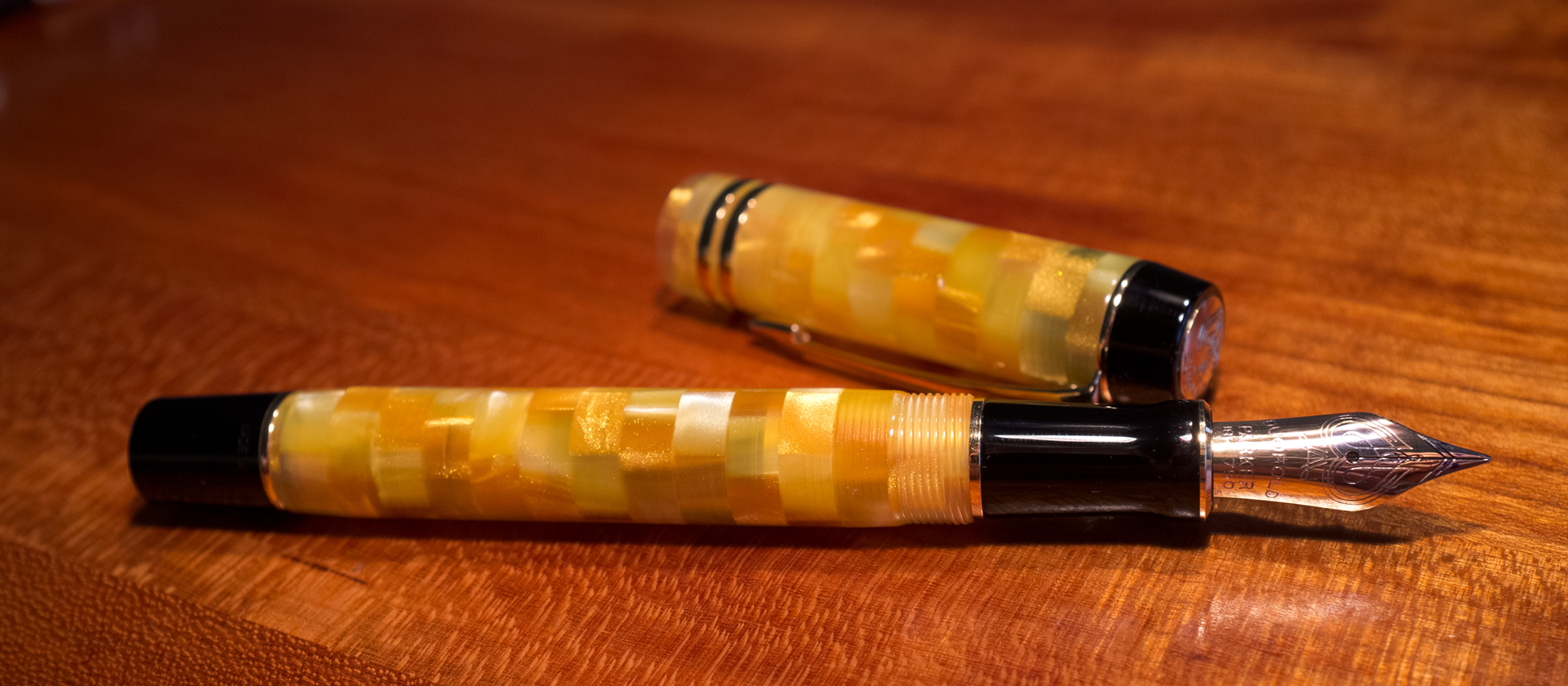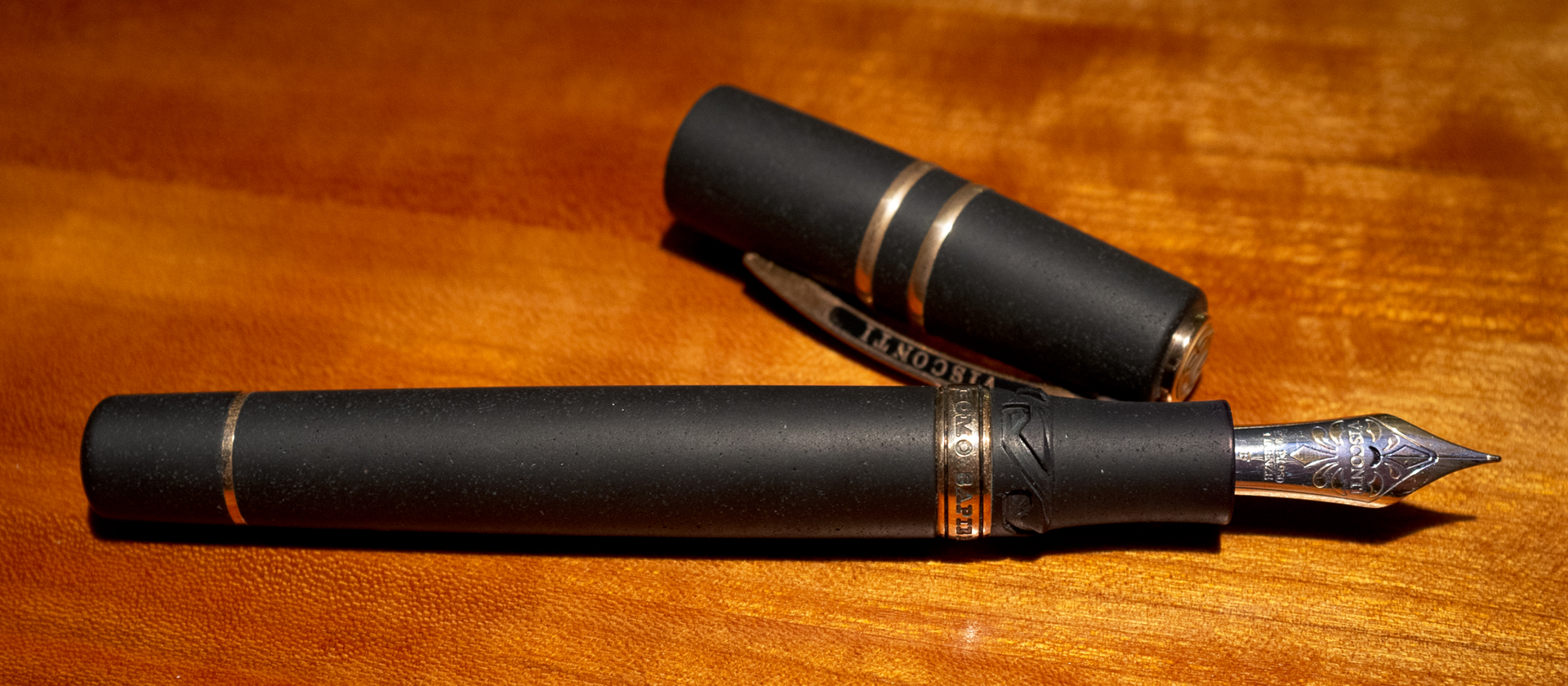People who like writing, and heads of state signing treaties, are happy to pick up a fountain pen. Lawyers, doctors and poets all seem to have one, but more and more aficionados, bitten by writing jitters, increasingly feel like using pen and ink. With the correct choice of feather and ink, a handwriting lover lends character to her or his own text by giving it a unique style.
We all write, but what we write with remains to be seen. It’s a bit like watches. They all show the time, but where one watch comes as a free gift from a mail order company selling beauty products, another costs a small fortune. Fountain pens are everywhere, but while scribblers perhaps expect to write more fluently, even beautifully, with a fountain pen, those who already have fine handwriting will certainly add some stately quality or even an everlasting beauty to their literary productions. Some people don’t even use it at all, but regard the precious trinket as an investment, just like an expensive jewel.
A fountain pen has to have a handy grip, keep its balance well – not too heavy, light or small -, have a good flow of ink straight away and not act up while writing, certainly not leak or stain, be easy to fill and – if need be – repairable. In short, a fountain pen is a writing tool and has to function, no matter what.
The present writer put two affordable pens to the test: the newfangled Visconti Homo Sapiens and an old acquaintance, the Parker Duofold. They were purchased from two different, reliable sources on the internet: J.M. Lewertowsky through Amazon, and Ludwig Blankenhorn through his own web shop at www.fuellhalter.de.
Each pen is packed in a strikingly beautiful case: the Parker Duofold Centennial Citrine is presented on black velvet and the Visconti sits on beige (imitation) leather. The Duofold has a generic instruction leaflet underneath its box, together with a proprietary ink cartridge and a converter. The Visconti is accompanied by a polishing cloth and a product summary, tucked away in a small drawer at the side of the box. Despite its ingenious and refined design, the packaging is completely uninteresting. It’s a good idea to purchase a soft leather holder to take the pen.
The construction and overall quality of the two pens are excellent. The Duofold looks brilliant with its polished, geometrical pattern outlined by lemon yellow patches all around, interspersed with brightly lit highlights. The two 23 carat gold bands and clip contrast beautifully with the deep black handle and tip. The pen is clearly inspired by Parker’s Mandarin design from 1921.
The moulded and fusion-bond acrylic resin of the Duofold is made from the same glasslike material as mobile phone screens. It’s sturdy, doesn’t turn yellow (!) or grainy and is UV light resistant. The non-tapering cap screws onto the body or fits onto the top of the pen when writing. One drawback perhaps, is the lack of a metal insert in the screw section. Although it is very hard to snatch the cap from the housing without unscrewing, a warning is called for before lending this gem to a curious admirer.
The Visconti Homo Sapiens has a very different design. It looks tough and very sturdy, has a black matt finish and is rather bulky, with a solid brass clip and ring-shaped ornamentation. It’s made from crushed lava, mixed with rubber. The hygroscopic material gives the pen a soft, dry, tactile feeling. The typical smell of lava is noticeable too, but this fades away after a short time.
The bayonet locking mechanism of the Visconti is special; the cap comes off with a short rotation of about 30 degrees to the right. The cap holds a spring which – when re-closing the pen – keeps everything firmly together with recesses around the pen barrel. A clever feature is the option to put semi-precious stones or the owner’s initials at the top of the cap, thanks to the magnetic platelets of Visconti’s own ‘My Pen System’.
Dimensions and weight, Parker Duofold Citrine Gold Trim Centennial F:
closed: 13.73 cm
open with cap: 17.55 cm
open without cap: 12.8 cm
pen diameter: 13 mm
cap diameter: 15 mm
weight with ink in converter: 29.5 gr.
Dimensions and weight, Visconti Homo Sapiens Bronze trim:
closed: 14.5 cm
open with cap: 17.1 cm
open without cap: 13.2 cm
pen diameter: 14.4 mm
cap diameter: 16.8 mm
weight with ink: 45 gr.
For the most part, the nib determines the writing results of the pen. By means of a capillary effect, the nib doesn’t require any pressure at all for the ink to flow out. In both pens, the nib gently skates over the paper without the slightest interruption. The net result is relaxed and fluent writing.
The Duofold has a nib of pure 18 carat gold with platinum accents and a circular vent. There are 14 different sizes, ranging from extra large to extra fine, for both oblique and straight script. The Visconti nib is made of 23 carat palladium with a crescent-shaped vent. Nibs come in five different sizes for straight handwriting.
The nib of the Duofold yields somewhat more than the stiffer Visconti but neither feels “jumpy” at all. The M-nib (medium) is relatively wide for both pens. An F-nib (fine) has a more normal line width.
Every pen needs ink, and over the years filling systems have improved constantly. Parker has two: ink cartridges in their own format and a so-called converter. The latter consists of a simple piston mechanism in a small tube, and no more than an easy turning motion is needed for the ink to fill the transparent reservoir.
The Visconti has an internal, and consequently invisible, piston system made of titanium. A piston rod is released by loosening a blind screw at the top of the pen. Dip the pen in ink and push the plunger smoothly all the way back, then slowly count to ten and the ink is in the pen.
Tips: with a new pen, it is necessary to repeat this procedure a few times in order to get all the air out of the system. Visconti sells a travel inkwell, making filling much easier.
Fountain pens require little maintenance; the ink supply section needs an occasional wash with soft water, that’s all. A dried out pen can be made to work again by soaking the writing section in (lukewarm) water for some time.
Tip: Never use acrylic-based ink in a fountain pen. It contains pigments that dry out and irreversibly clog the pen. It is reassuring that in case of emergency many specialized pen repairers are ready to help.
Summary: these are two affordable gems which can give the daily, or not-so-daily, writer years of pleasure. The differences lie in the design and materials used and, to a lesser extent, the available accessories and the ink-filling mechanism. A female writer might choose the more elegant and colourful Parker Duofold, while men might fall for the technical robustness of the Visconti.
text: © J. Gysenbergs / editor: Jill Boniface
Dutch version: Twee vulpennen: een Parker Duofold en een Visconti Homo Sapiens
Disclaimer: I have no affiliation with any retailer, distributor or manufacturer of pens, inks or stationery, nor have I recieved, been offered, or solicited free samples or discounts.




